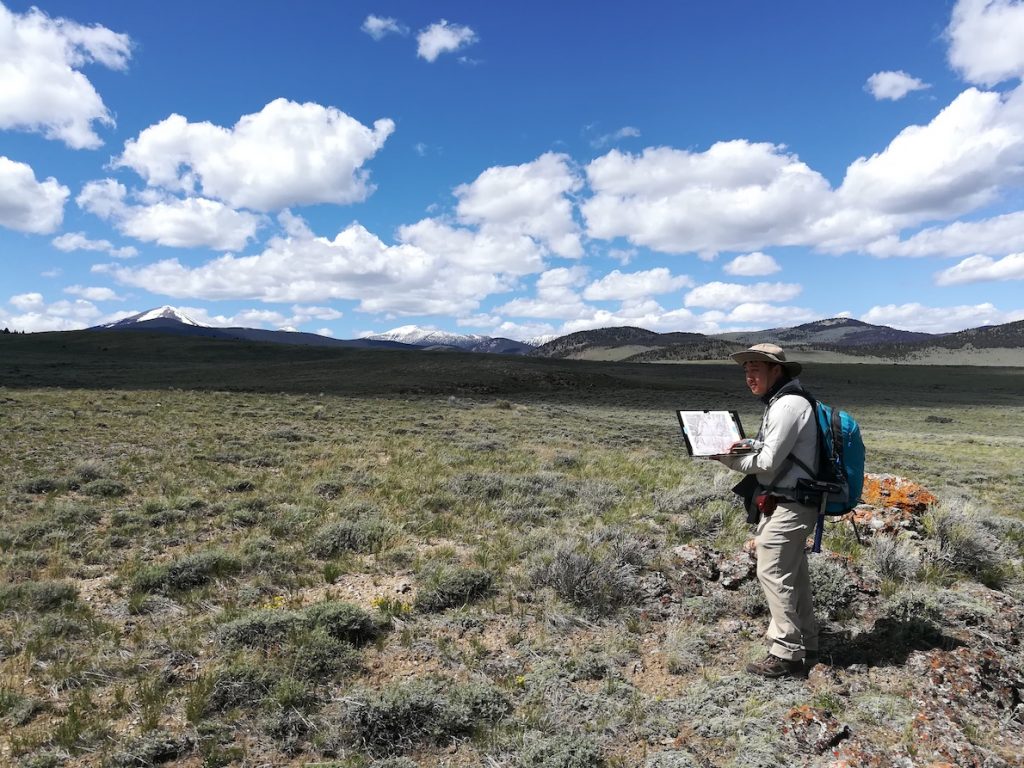Former Temblor extern Jeng Hann Chong takes us on his journey from being misinformed about earthquakes to studying them as he pursues his doctoral degree.
By Jeng Hann Chong, University of New Mexico
I was born and raised in Malaysia, a warm and humid tropical country in Southeast Asia bordering the South China Sea. Malaysia sits within the interior of the Sunda Plate, relatively far from any active plate margins. The seismicity and volcanism on the plate boundaries affect Indonesia, which is known for its earthquakes, like the 2004 magnitude-9 earthquake in Sumatra that devastated Indonesia but left Malaysia alone.
Despite Malaysia being a seismically quiet region, in 2015, a devastating earthquake struck the northern part of Borneo — the island shared among Malaysia to the northwest, Indonesia to the southeast, and Brunei to the west. The magnitude-6.0 earthquake occurred in Ranau, Sabah, a state in northwestern Malaysia, and became known as the 2015 Ranau earthquake. The epicenter was located near Mount Kinabalu, a well-known tourist destination where people attempt to hike to the top of the highest peak in Borneo. The strongest shaking was recorded around Mount Kinabalu, with reports of earthquake-triggered rockfalls and landslides that trapped hundreds of climbers atop the lofty peak. Rockfalls took 18 lives.
I had just started college in Malaysia, where I did my associate’s degree. This event motivated me to venture into the field of earthquake research.

The beginning
I was in disbelief after watching the national news reporting on the earthquake because I was told during my primary school years that earthquakes do not happen in Malaysia. I worried about the possibility of more earthquakes striking other parts of the country hundreds of kilometers away from Ranau, near buildings not designed to withstand moderate-to-large earthquakes. Only later did I understand that this was not a likely scenario.

At this point in my life, I did not have any formal education related to earthquakes or geology. I remember being clueless about the actions I needed to undertake to save my life should an earthquake strike. I frantically looked up information on the internet, in hopes of finding what I should do if I felt the earth shake. However, in my panic, I worried that the actions suggested by the websites I found were incorrect, feeding my fear. I was just like many Malaysian people who did not understand how earthquakes happened, give that we’re largely taught that the gods were angered due to some incident that had occurred the week before, causing the earthquake.
As a result of this earthquake, I became more curious about earthquakes as I wondered why such an earthquake rocked a region where earthquakes don’t typically occur. The Ranau earthquake reminded many Malaysians, including me, that our country is not earthquake-proof. Shortly after the event, the Malaysian government pushed to improve the seismic network and earthquake awareness programs in earthquake-prone regions.
Journey to a new field
I have always wanted to study science and my initial interest was astronomy. However, the Ranau earthquake inspired me to explore geology as a possible major. I was accepted to the University of Maryland, where I completed my Bachelor of Science degree in geology and ultimately performed research related to earthquakes. However, along the way, I encountered moments of doubt.
I doubted my decision of selecting a field that was largely unknown to my fellow Malaysians back home. Choosing a field inspired by watching science documentaries was a risk, as was traveling so far from home to pursue this dream. Having had no formal geoscience training before this, and not knowing any geologists, I had no role models, mentors or even peers.
As I applied for undergraduate geoscience programs, I did not specify that I wanted to focus on research despite my interest in earthquakes. I never truly understood what qualities being a scientist requires, which led me to doubt my own capabilities. Early on, I considered how difficult it would be to find a geology-related job back home after completing my undergraduate degree. I didn’t realize until my second semester at the University of Maryland that it is possible to work as a researcher. And so, I became interested in pursuing research.

Next steps
Despite being an international student, I was fortunate to have support from the faculty and graduate students in the geology department at the University of Maryland. Their encouragement played a part in my persistence to do research and showed me the possibilities of scientific research as a career. I ultimately worked on an earthquake-related research project, and because I enjoyed it, I went on to graduate school to continue doing earthquake research at Cal State University Northridge. Meanwhile, I did a science writing externship at Temblor to improve my science communication. In May 2021, I completed my master’s and have now started my doctorate program at the University of New Mexico where I’ll be working on studying tectonic deformation using geodetic techniques such as InSAR and GNSS.

To those of you who feel unsure about pursuing geoscience (or any science), I understand it can be difficult to have no role mode or mentor to guide you along the path. I hope my story can inspire you to explore the various topics within geoscience. Hopefully, you can find something that interests you, or someone who inspires you. A first step could be as simple as acknowledging your interest in pursuing geoscience. From there, I hope my story will help you slowly work toward your goal, as I am doing now.
- Earthquake science illuminates landslide behavior - June 13, 2025
- Destruction and Transformation: Lessons learned from the 2015 Gorkha, Nepal, earthquake - April 25, 2025
- Knock, knock, knocking on your door – the Julian earthquake in southern California issues reminder to be prepared - April 24, 2025
